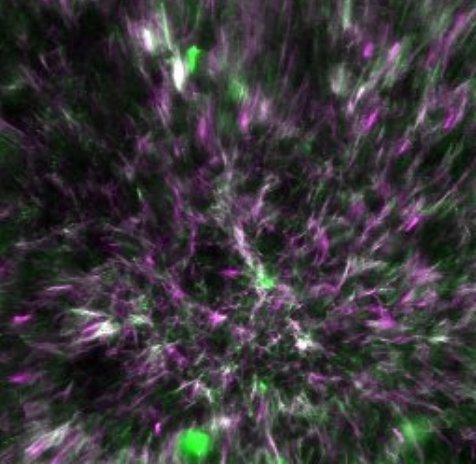Bringing Synthetic Material to Life
A&S physicist is a co-author on a paper exploring a biological system that may one day be applied to innovative self-healing roads and sidewalks of the future.

There are two things you can count on each winter in Central New York – snow flying through the air and potholes forming on the roads. But what if you never had to worry about dodging a pothole again? Imagine a road surface that could heal itself after encountering a crack or pothole. Instead of repaving or filling the hole, the synthetic material could rearrange itself each evening and, much like a cut on our body, heal on its own. It sounds impossible, but researchers at Syracuse University are working to bring it into the realm of possibility.
Jennifer Ross, professor and department chair of physics, is co-author on a paper exploring how the mechanical structural system inside cells, called the cytoskeleton, can be applied to creating a resilient material that can automatically contract and fluidize. The paper, titled Myosin-driven actin-microtubule networks exhibit self-organized contractile dynamics, was published in Science Advances, a scientific journal published by the American Association for the Advancement of Science.
The cytoskeleton is a structure inside a cell that helps it maintain its shape and internal organization, while also providing mechanical support that enables cells to carry out essential functions like division and movement. The team is using the cytoskeleton’s threadlike filamentous network as a model to create a composite system made up of both stiff filaments and flexible filaments. This gives the material a broad range of mechanical properties that protect it from degradation.

In this new paper, the team shows how they included more biological components within the composite system, including “motor proteins” harvested from muscle cells. They use light to turn on these motor proteins and make them contract and suck the material into a local region. A similar mechanism could be used in potholes that could contract to “heal” when sunlight hits the exposed material in the crack. The team eventually plans to incorporate circadian proteins, which contain a molecular clock that could alert the material when it’s time to contract and fluidize.
In testing, the team observed that a material made from the composite network with the stiff filaments is more resilient to the contraction. Without the composite network, the material disintegrates, which isn’t helpful if you want a material such as cement to sustain and repair itself over time.
Ross says it is important to note that biologically-derived materials used in their research cannot be used for the sidewalks or roofing composites of the future, but the lessons they learn will one day be applied to these innovative materials.
As a member of the BioInspired Institute, Ross’s work on this project embodies the interdisciplinary group’s efforts to use complex biological systems research to address global challenges in health, medicine and materials innovation.
Work on this project was funded by W. M. Keck Foundation, an American charitable foundation supporting scientific, engineering and medical research in the United States.
Featured
Jennifer Ross Interim Dean for the College of Engineering and Computer Science, Professor of Physics
